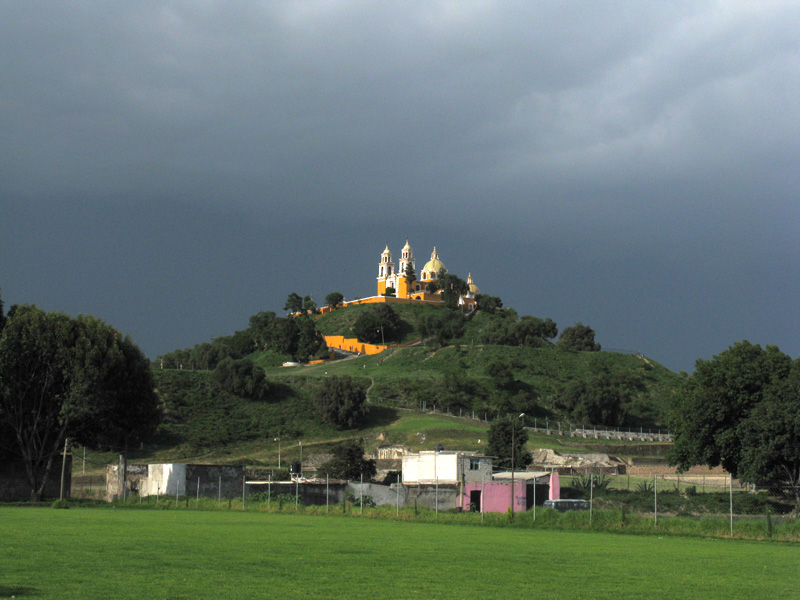Source: Photographs by WTL© (2009) on site in the Paso de Cortés, Puebla, México.
Image: The entire middle lower middle area of this photo roughly from the buildings in the foreground to the church at the top of the "hill" was once the pyramid of Cholula. Before it was dismantled by the Spanish colonists in the second half of the 16th century, the pyramid here was the largest pyramid in the world by volume. When most of the construction materials were scavenged by the colonists to build the new colonial city where the major and magnificent Cholulteca city had been on the same site, the great mass of the pyramid reverted to nature: years of dust, dirt, seeds, etc. built up to produce what became just another hill, except for the fact that the Spanish colonists built a church on top of the hill, a church that is maintained by ten different churches in the twin cities of modern greater Cholula for a period of a decade each.
For an additional embedded digital tour of this archeological site and the church, see: => Cholula.
Humanities question: In this image, what is the relationship between visible humanities object (i.e., the church and its architecture) and the mostly invisible one (i.e., what remains of a giant pyramid)?

